What is LAMP? How does it help communication?

When my lovely Kindergarten student began school, she had an iPad and an app with 30 words on it. She was primarily using gestures, facial expressions, and a few ASL words to communicate her needs and wants. The problem was that she had receptive language skills within the average range. She understood nearly everything but was severely limited in her expressive language. This is the student that I’ve dreamed of serving for the last 16 years, someone with whom I could make a huge impact almost immediately.
Within a few weeks, we had given her a loaner iPad with LAMP Words for Life. And that is when the explanations of the program and philosophy behind it became a nearly weekly lecture.
According to their website, LAMP Words for Life is a full vocabulary app for tablets. It is based on the Unity language system where every picture symbol on the front page represents a verb, noun, adjective, and category. According to Prentke Romich, 80% of words that are used in English are called “core” words. These words can all be found on the front page of the app.
Watch this amazing video of a student using LAMP for the first time and accessing the program with their toe!
There are several levels of LAMP for users including:
- 1-hit: Every push of a symbol will elicit a spoken word. This is ideal for users who cannot handle multiple hits to find a word.
- Transition: With the transition level, users are introduced to 2-hit vocabulary. For example, the user learns to push the apple (eat) and then the action man (verb) to say “eat”. Early word list (such as the Dolsch) words are included in this level.
- Full vocabulary: There are over 3000 words included in the full vocabulary. At this level, users can communicate most grammatical structures and all common vocabulary, including fringe vocabulary. The full vocabulary program is robust and very thorough.
What is the best level of LAMP for new users?
I spent a year doing an AAC/AT internship at a university clinic. One of my biggest takeaways from that experience is that you start where you think the augmentative communicator will be able to achieve. That means that for my little Kindergartener with average receptive language, I was not going to start with one hit. I didn’t even start with transition. I gave her the full vocabulary and taught her how to use multi-hit.
Was it difficult for her? Yes.
Did she always get things right? No.
Did I sometimes limit the number of symbols that she could see in order to help her focus on our targeted vocabulary? Yes.
I wanted her to learn the motor planning involved in using a multi-hit AAC system. Since I had seen her navigate an iPad before, I knew she was very capable of switching from screen to screen and finding apps on a desired screen. To me, this indicated that she was a great candidate for multi-hit full vocabulary. I would argue that almost any child that can navigate through their parents’ iPhone is able to use multi-hit vocabulary.
If we had started slow with 1-hit vocabulary, she would have learned the motor planning for some words, but then when we eventually bumped her up to a higher level, everything that she learned would have to be relearned in a new way. I am not a fan of teaching something only to have it taken away. I learn phone numbers by typing them repeatedly on my phone. She learned expressive language by repeatedly locating the symbols.
Amazing things about LAMP:
- It uses the Unity language system and allows readers and non-readers to express themselves with up to 3000 words.
- It utilizes motor planning.
- It is adaptable. You can add new customized vocabulary if needed. You can also hide vocabulary.
- It is used on a tablet. AAC users with a tablet look much more like their peers than users with big devices hung around their necks.
- It is relatively inexpensive. A brand new iPad costs $250-$500 and the app costs $300. This is affordable to some parents and within grant range for many others. This makes it thousands and thousands of dollars less than most dedicated AAC devices.
- The app can be transferred to a new tablet when one is bought. You can start on an old, used device, and then when money allows upgrade your tablet and keep the app.
Disadvantages of LAMP:
- There is little to no customer support. If something happens and the app breaks, you are out of luck.
- There are limited personalization options. The high end dedicated devices usually have many more options.
- There is no built-in tutorial system.
My little Kindergartener eventually received an expensive, dedicated device because of the customer support, warranty, and built-in tutorial system that came with it.
How do you teach LAMP to a new user?
When I began teaching my student LAMP, I hid much of the vocabulary and taught her some individual core words. Verbs, in particular, have power when communicating. Soon thereafter, I introduced short sentences and categories. I created a set of books to help her with short sentences. We focused on 2-3 words (including categories) and the pronouns “I” and “you”. You can find more about these here.
Within a few months, however, she had mastered those short sentences and it was time to make things slightly more difficult. We began working on 3rd person singular verbs. This created many opportunities for learning as the student learned he/she/it pronouns as well as 3rd person singular verb endings. I was so proud of her the first time that she read aloud one of the books!
And now, these 3rd personal singular books are available for sale! You can use these books with LAMP users as well as any early communicators to practice grammar, vocabulary, and categories.
Each book is created around: a pronoun + a verb + a category area. For example, the book “It eats (fruit)” contains “it eats” on every page, with the fruits being ones that can be easily found under the “fruit” category on the LAMP app. If you are using LAMP and the sentence “It eats the pear”, you could hit the following icons (there are several options): it + it + eat + -s + the + food + fruit+ apple.
There are a total of 14 books to print out and use (or show on your tablet) to encourage multi-word sentences in a fun way! Do a dance party each time a book is completed to help celebrate! Purchase Simple Sentences #2 for Early Language Learners here!
Comment below and tell me if you have ever used LAMP Words for Life and what you like or don’t like about it?
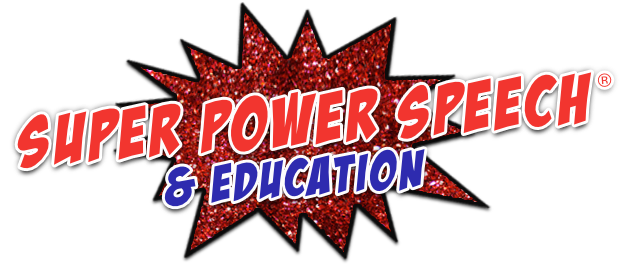
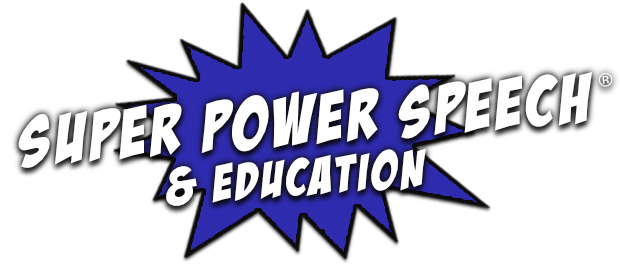
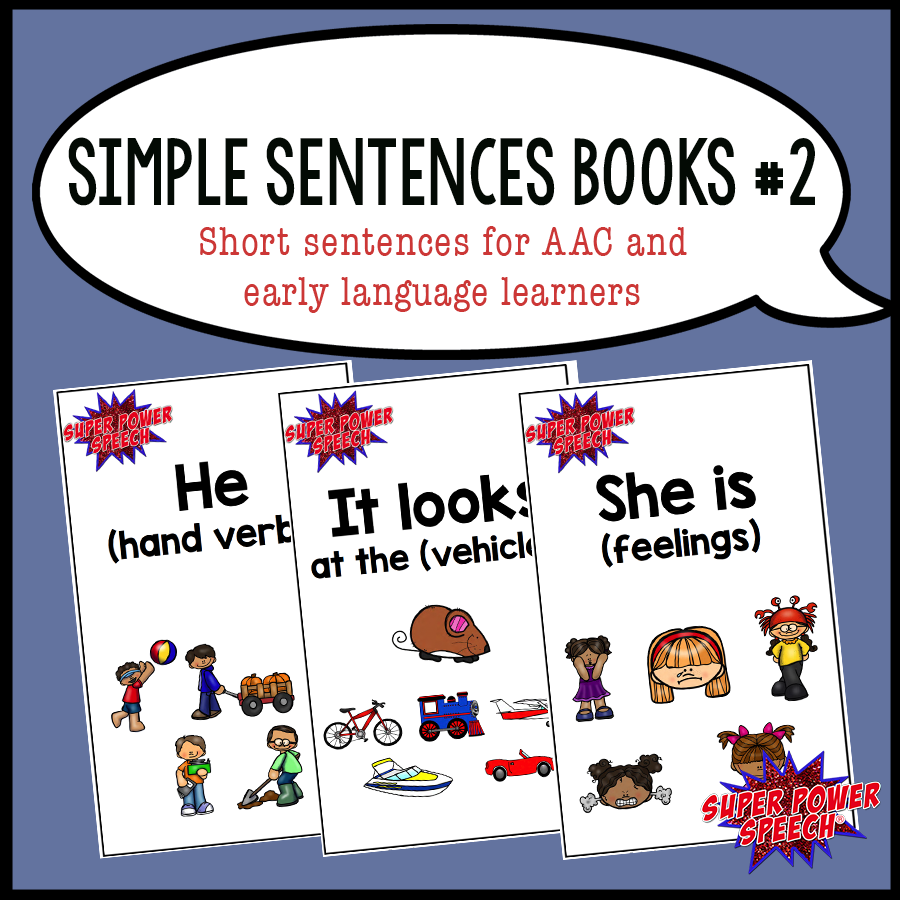
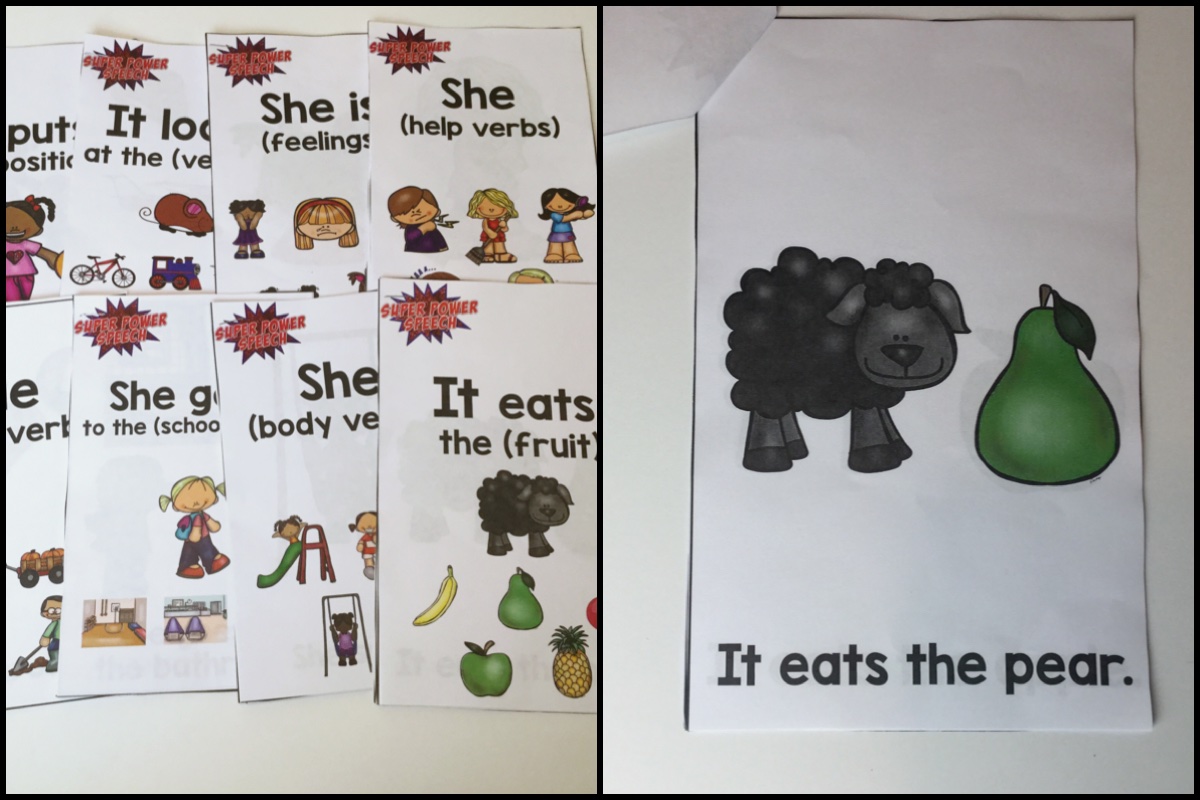

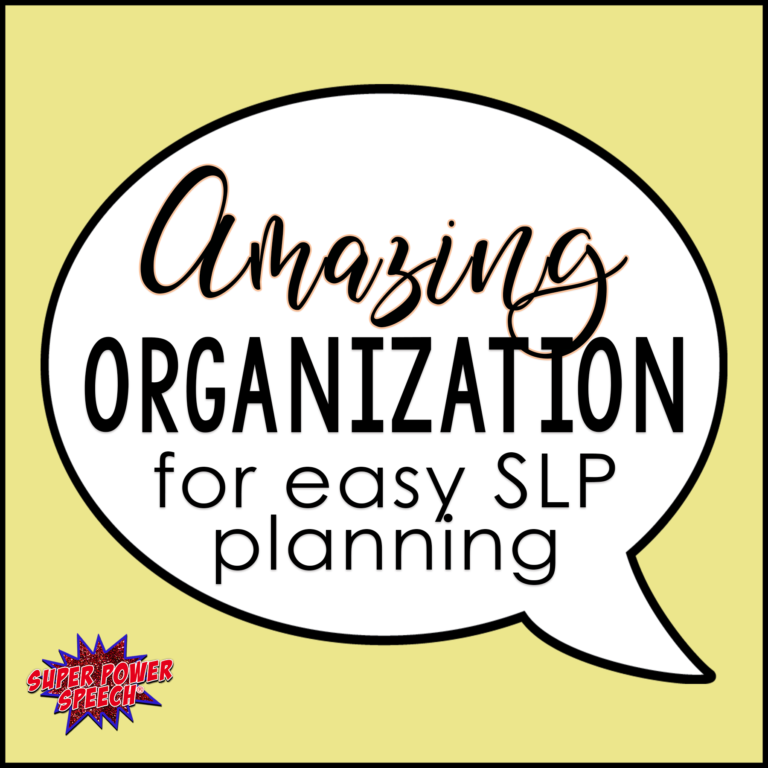
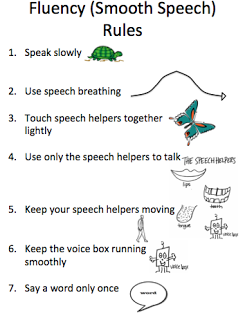

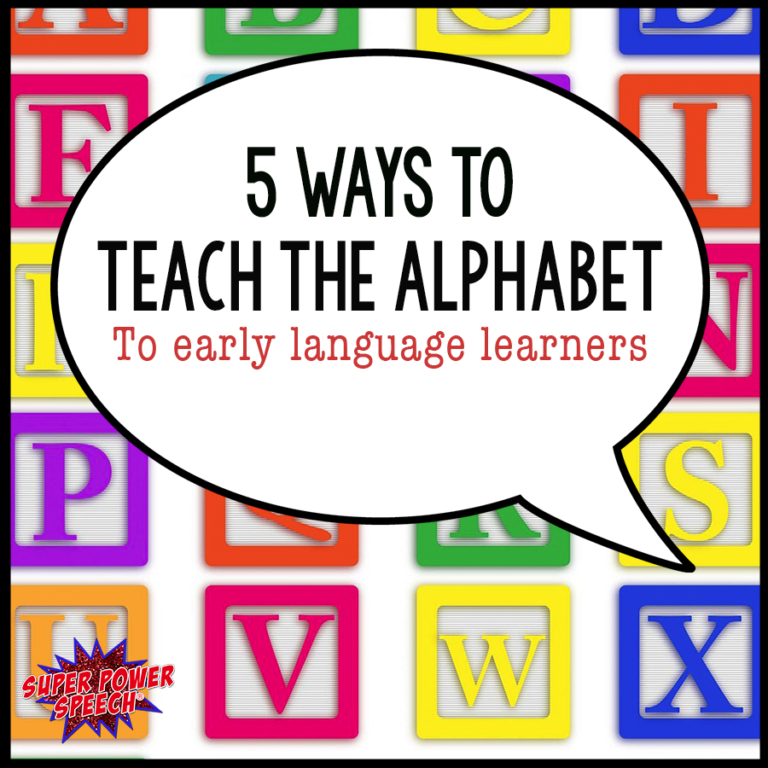

I bought these and I LOVE them, for my LAMP user, and my other AAC users.
Have you ever thought about making a guide for LAMP that can aide as a visual support for the SLPs or classroom staff that cannot navigate as well as their students?
LAMP Words for Life is a great app. I’ve long-loved the PRC range of devices and their focus on core words for building generative language. The one thing I have learned to be careful about with some kids with autism and dyspraxia is building accidental incorrect patterns. I’ve found that for some kids, once they use an incorrect path to a word that path persists; that is, the student continues to navigate to the wrong page or symbol then back out to the correct path/symbol.
Thank you for pointing out that we should start where we want a student to go, not necessarily where he/she is right now. Too often kids get stuck at too simple language without a good way to grow it. Great post.
I’m just curious, did you end up using Unity on an Accent or did you switch language programs when you got a dedicated device?
For one student, yes, we ended up with Unity on an Accent (due to a variety of physical conditions).
I love LAMP! I had two students on it last year and it was amazing how quickly they figured out the path to symbols, some of which we didn’t know were there. I have a PDF document (source unknown) with a great chart listing all the symbols and what category they fall under. If you’d like it, I can email it to you.
I have looked at these books several times but just haven’t bought them. I plan to now! I love LAMP and this will pair nicely with use of the app when teaching structure. What a great idea. Thanks!